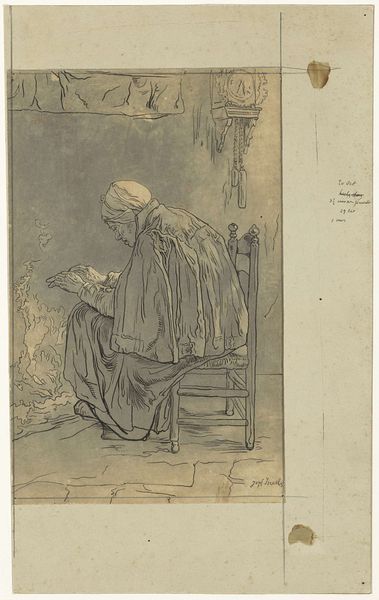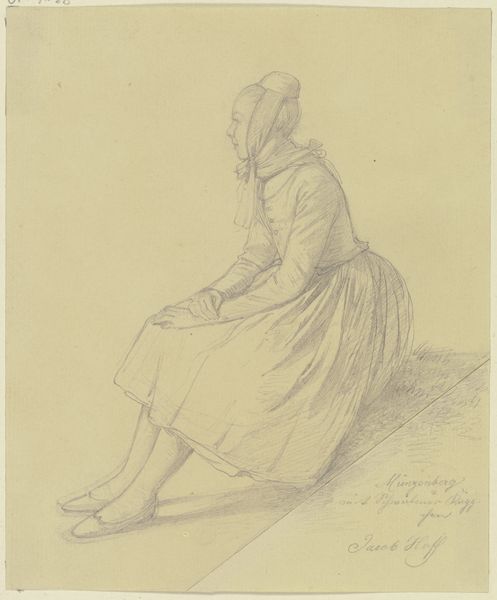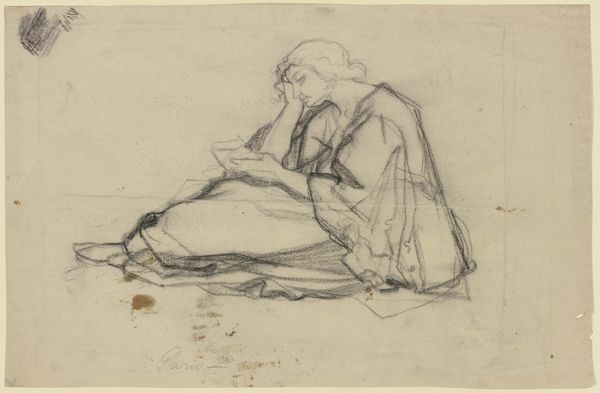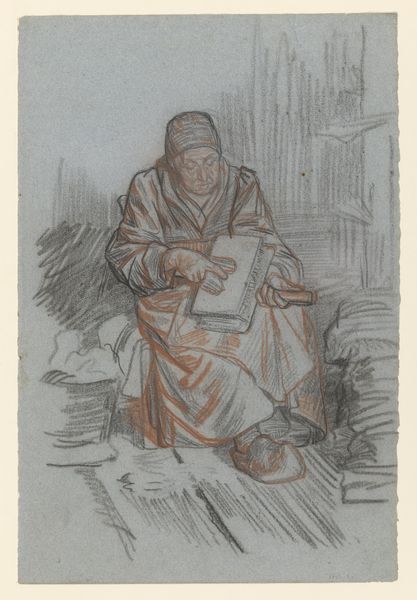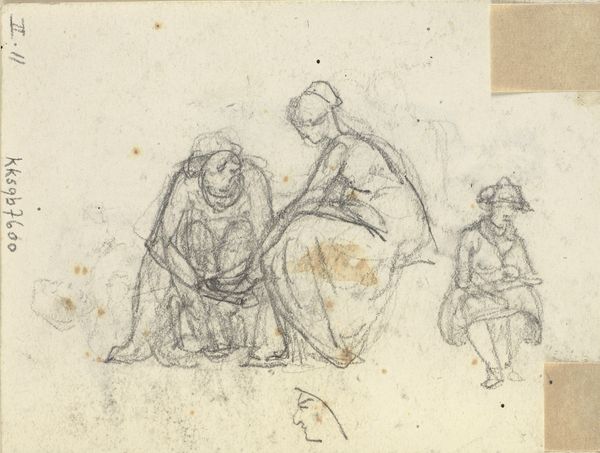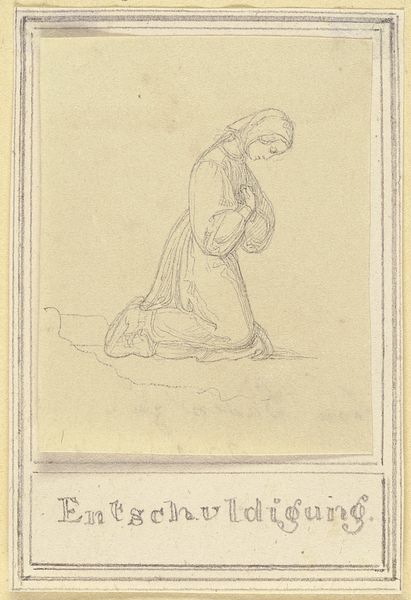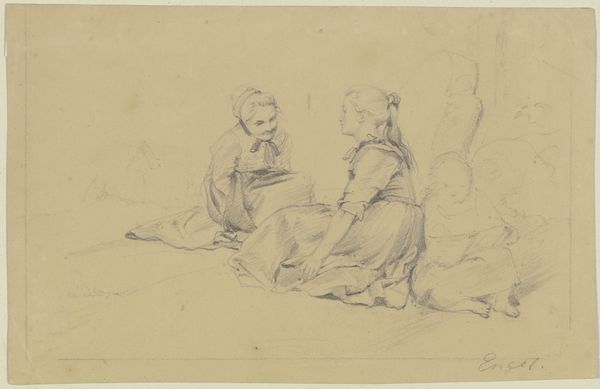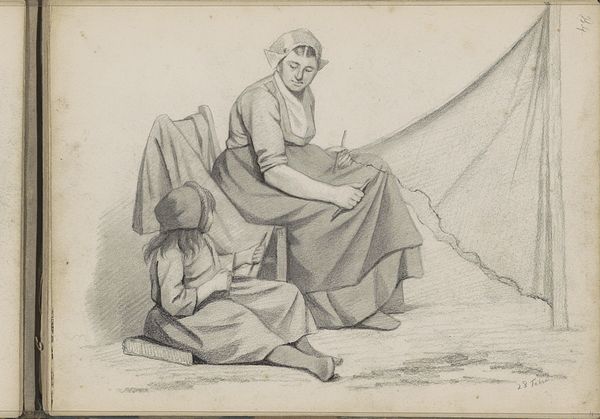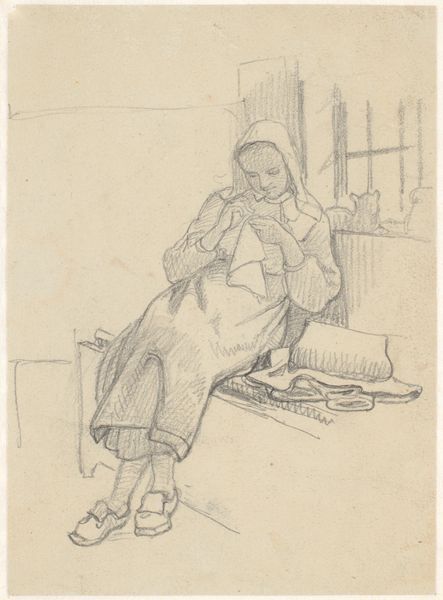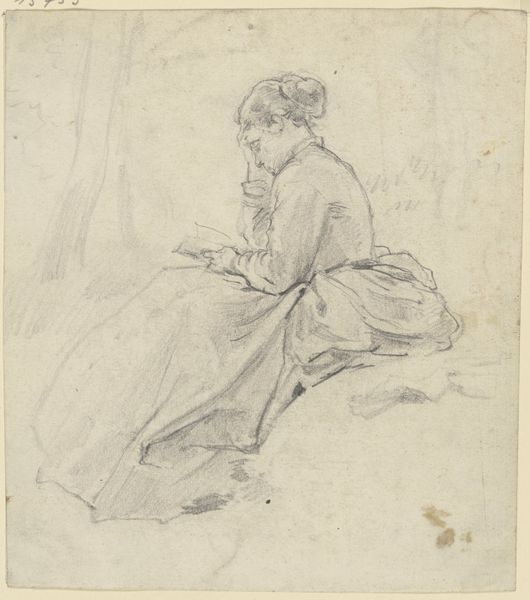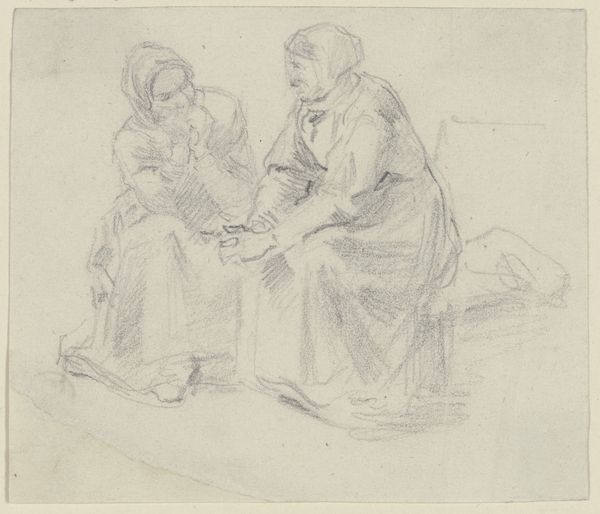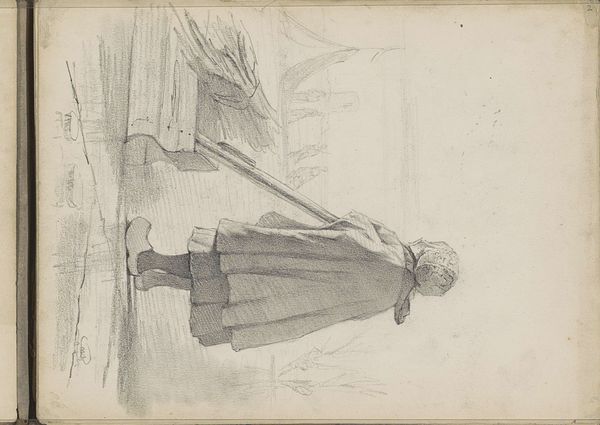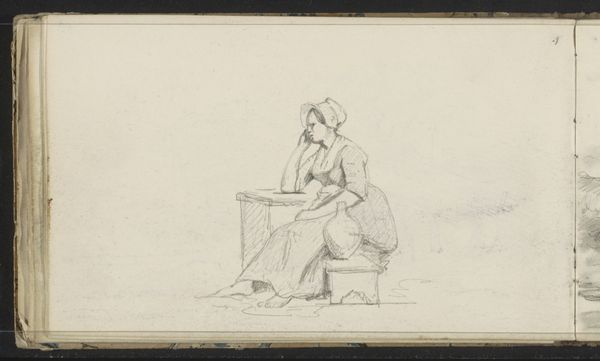
Copyright: Public Domain
Curator: Before us is "Alte Frau auf der Haustreppe," which translates to "Old Woman on the Doorstep," a pencil drawing created around 1860 by the German artist Hugo Kauffmann, currently residing here at the Städel Museum. Editor: There's a melancholic stillness in this piece. The shading emphasizes a sort of hunched posture, suggesting weariness, while the monochrome palette amplifies the somber mood. Curator: Kauffmann’s artistic lineage and social standing are significant. He was very interested in Romanticism and genre painting, evident in his realistic, everyday subject matter and technique. The materials—paper and pencil—were readily available, but the skill in rendering form and shadow is a testament to academic training and societal norms of his time, especially among German artists. Editor: Looking closely, the artist uses hatching and cross-hatching to create a sense of depth and texture, primarily in the woman's clothing and face. See how the varying densities of these lines sculpt the form, implying the fall of light? Curator: Yes, but also note how Kauffmann portrays aging. The wrinkles, the slump, even the somewhat distressed edges of her garments. Kauffmann seems very preoccupied in capturing her laboring class identity through costume and demeanor. Editor: Agreed. But what's interesting is how the composition keeps pulling us back to her face. The tilt of her head, the hand supporting her face – they form a focal point. It makes one pause to try and grasp her story. Curator: That story might also reflect a societal narrative about the elderly and their place in the 19th century German landscape. Such intimate drawings depicting older working women hint to how their domestic work shaped production outside the art studio. The domestic realm becomes visible, which in turn shifts assumptions. Editor: I find the way that Kauffmann employed the formal properties is quite revealing here: that such a simple, subtle study in graphite becomes emotionally powerful. The light seems to caress the figure in ways that give off a feeling of reverence. Curator: Understanding Kauffmann’s social perspective encourages reflection about material conditions, labor, and visibility of the working-class woman within German society in his art. Editor: And for me, isolating his mastery of line, value and form generates an engagement and dialogue, too. It transcends simple social constructs, resonating even now with emotional depth.
Comments
No comments
Be the first to comment and join the conversation on the ultimate creative platform.
